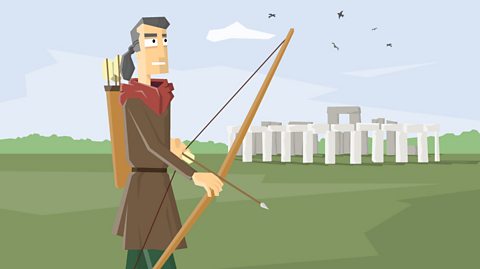Watch: What happened in Prehistoric Britain?
Take a trip through 900,000 years of prehistoric history.
Narrator: Excuse me. Yes, you. Ever wondered what prehistoric Britain was like? Great! Well letтs start at the beginning.The ancestors of humans first appeared in Britain around 900,000 years ago.
Here is one of them. I would like to introduce you to your great, great, great, great, great, great, great, great, greatтІтІgreat, great, great, great, greatтІ grandfather.
Donтt worry about that, heтs just saying pleased to meet you. These early Britons were hunter-gatherers. They used flint tools to hunt animals, like deer and mammoths.
And it got cold. Really cold, for a long time. Can you guess what it was called? No idea? Itтs quite obviousтІ Ok, Iтll tell youтІ The Ice Age!
Then it was warm. Then hot. Then cold again. Once that was out of the way humans discovered farming and began to settle down in villages. This all happened during theтІ during the Stone AgeтІ excuse meтІ stop!
Sorry, but we must get on to the Bronze Age.
Itтs called the Bronze Age because people discovered how to use metals like bronze for the first time.
Welcome to the Iron Age! Youтve upgraded. People used iron in the Iron Age because it was easier to find and knock into shape. Ah, Celtic warriors. Donтt they look fierce!
The prehistoric period ended when the Romans arrived, who brought us roads and indoor plumbing.
Well, there we go, hundreds of thousands of years in a matter of minutes. Did you enjoy that? Fantastic! Me too.
Sorry, history can sometimes get a bit messy.
Prehistoric Britain
- Prehistoric Britain began when the first humans arrived in the British Isles.
- It ended when the Romans conquered the ancient Britons in AD43 and Britain became part of the Roman Empire.
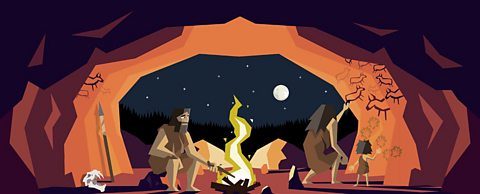
The earliest humans were hunter-gatherers. They survived by hunting animals and finding food to eat.
Very gradually people learned new skills. First they learned to herd animals and grow crops. Later they discovered the secrets of making bronze and iron.
Prehistoric people couldn't read or write, but they were incredible builders. Their tombs, forts and monuments have survived for thousands of years.
How do we know about prehistory?
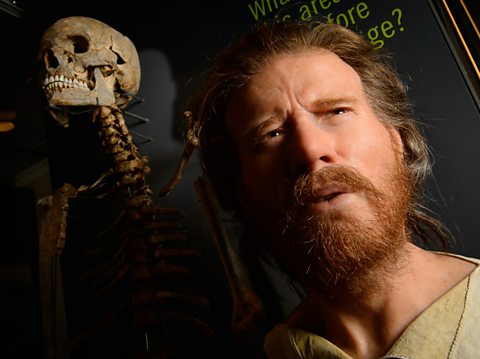
Prehistoric people left no written records, so how do we know about their lives?
Archaeologists work like detectives looking for evidence. They use this evidence to build up a picture of the past:
The remains of homes and temples show how people lived and worshipped.
Tools and weapons give clues about the way people worked and fought.
Bumps and ridges in the landscape show the layout of ancient villages, fields and forts.
Some of the best evidence comes from human remains. Skeletons have been found buried with their possessions and a few bodies have been preserved in bogs.
By examining human remains, experts can work out when a person lived. Sometimes they can even suggest what they looked like!

What happened when the Romans came?
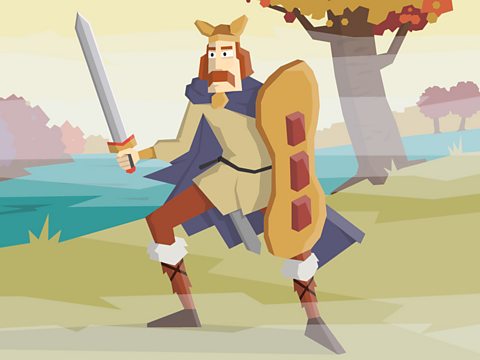
The prehistoric period came to an end when the Romans invaded Britain.
In 55BC Julius Caesar tried to invade Britain, but he was driven back by The Britons.
The next year he tried again and failed.
Almost 100 years later, in AD43, the Roman Emperor Claudius launched a new invasion. This time the Romans conquered Britain.
Some ancient Britons retreated to Cornwall, Wales and Scotland, where they continued to follow their Celtic customs. Many others decided not to move. They stayed on in Britain and learned to live like the Romans.
A few Roman writers described the ancient Britons. Their writings provide a valuable source of evidence for life in Iron Age Britain.
Julius Caesar pictured the Britons as fierce warriors who rode their chariots into battle. He wrote that: All the Britons paint themselves with woad, which produces a dark blue colour, and for this reason they are much more frightful in appearance in battle.

When was the prehistoric age in British history?
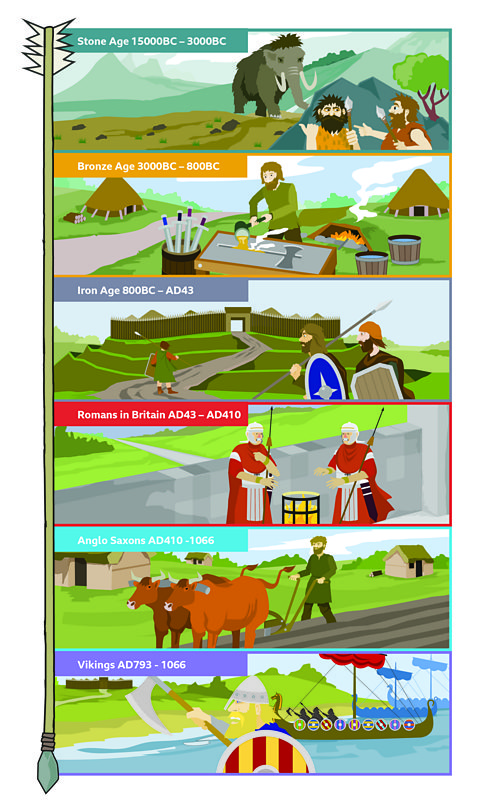
Activities
Activity 1: Prehistoric timeline
The prehistoric period is divided into three тagesт. They are known as the Stone Age, the Bronze Age and the Iron Age.
Click on the image to find out more.
Activity 2: Explore prehistoric sites
Take a look at three very different archaeological sites: a fort, a mine and a tomb.
Click on the images to uncover evidence about prehistoric Britain.
Activity 3: Prehistoric Britain quiz
Bitesize Primary games. gameBitesize Primary games
Play fun and educational primary games in science, maths, English, history, geography, art, computing and modern languages.

More on Prehistoric Britain
Find out more by working through a topic
- count3 of 6
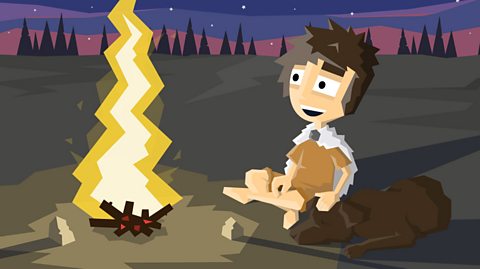
- count4 of 6
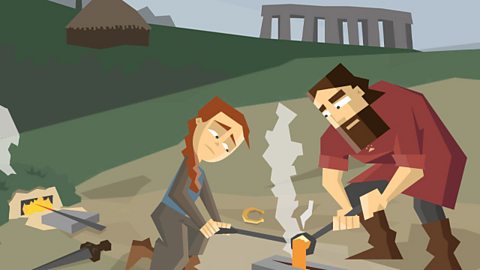
- count5 of 6
